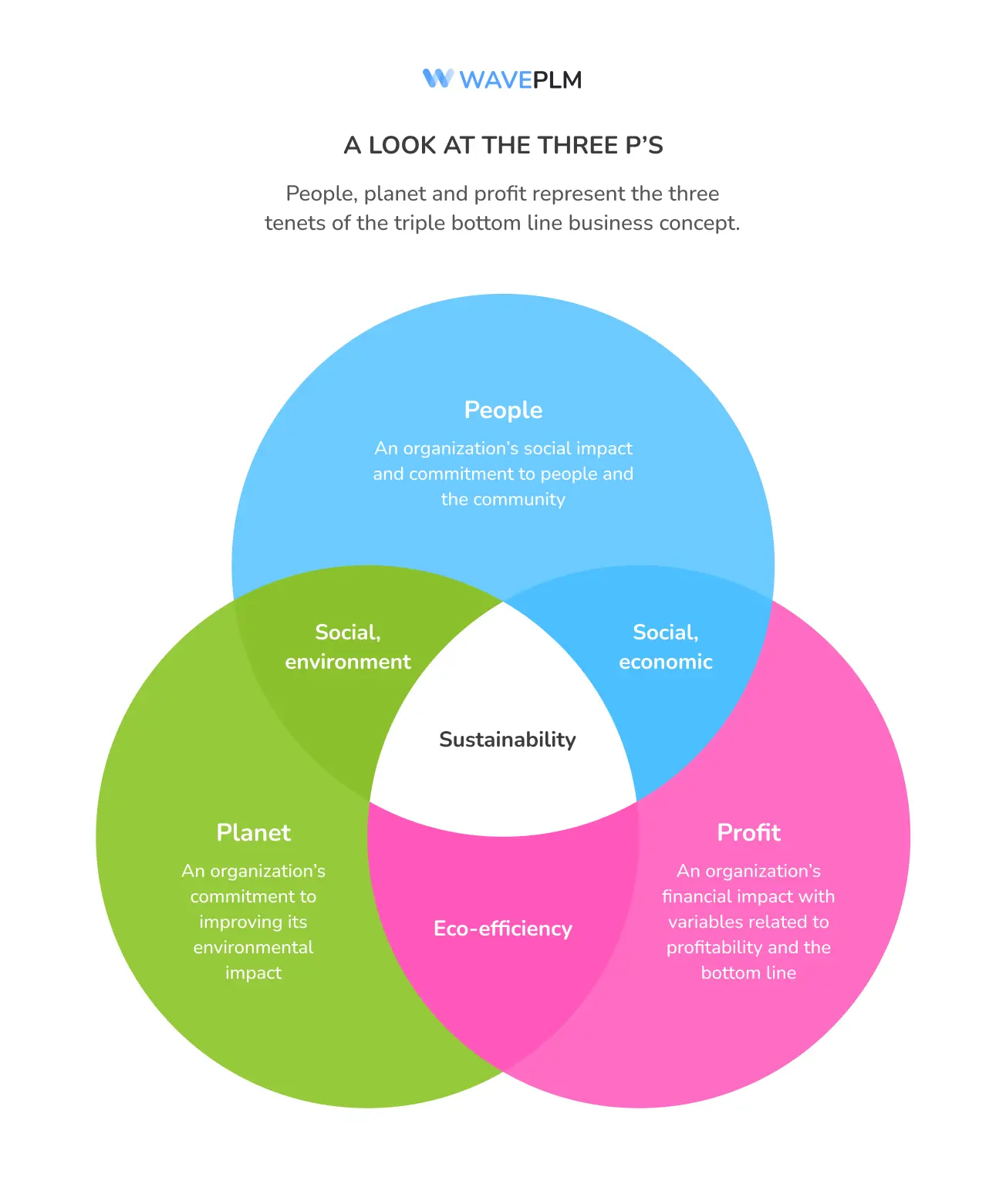
Triple Bottom Line in Fashion
In today’s increasingly conscientious marketplace, the concept of the triple bottom line has become a significant metric for businesses, especially in the fashion industry. Traditional business practices primarily focus on financial performance as the sole measure of success. However, many business leaders are increasingly acknowledging their social responsibility to drive positive environmental change. The triple bottom line approach expands this perspective by incorporating social and environmental considerations alongside economic gains, as well as social and environmental impact.
For fashion companies, adopting the triple bottom line framework is not just about enhancing their reputation; it’s about contributing to sustainable development and meeting the evolving expectations of consumers. In this article, we will delve into the concept of the triple bottom line and explore its application in the fashion industry.
Introduction to Sustainable Business
Sustainable business practices have become increasingly important in today’s world, as companies recognize the need to balance their financial performance with social and environmental responsibility. The triple bottom line approach, which considers people, planet, and profit, has become a widely accepted framework for measuring a company’s sustainability. This approach encourages businesses to integrate sustainable practices into their operations, reducing their environmental impact and promoting social equity. By adopting a triple bottom line framework, companies can improve their reputation, attract environmentally conscious consumers, and contribute to a more sustainable future.
Origin of the Triple Bottom Line
The triple bottom line was conceived by entrepreneur and business writer John Elkington in 1994 while he was at the think tank SustainAbility. This concept was later adopted by Shell in its first sustainability report in 1997. As interest in sustainable investing grew, the need for a transparent and consistent measurement framework led to the establishment of the non-profit Sustainability Accounting Standards Board (SASB).
What is the Triple Bottom Line?
The triple bottom line concept (TBL) is a business framework that evaluates a company’s performance based on three dimensions: people, planet, and profit. This approach encourages businesses to go beyond financial metrics and consider their impact on society and the environment. Additionally, understanding economic indicators is crucial for assessing the broader economic impact of an organization’s operations.
- People (Social Responsibility): This dimension assesses the social impact of a company’s operations. It involves fair labor practices, community engagement, and contributions to the well-being of employees and society. For fashion companies, this could mean ensuring safe working conditions, fair wages, and investing in community projects.
- Planet (Environmental Responsibility): This dimension evaluates the environmental sustainability of a company’s activities. It encompasses sustainable resource usage, waste management, and efforts to reduce carbon footprints. In fashion, this translates to using eco-friendly materials, minimizing waste through recycling and upcycling, and adopting sustainable production practices.
- Profit (Economic Responsibility): While profit remains a crucial aspect, the triple bottom line encourages business operations to achieve economic success without compromising social and environmental responsibilities. For fashion companies, financial bottom line means achieving profitability through ethical and sustainable means, aligning with the principles of line accounting.

History and Development
The concept of sustainable business has evolved over time, with the triple bottom line approach being introduced by John Elkington in 1994. Since then, the idea has gained momentum, with many companies adopting sustainable practices and reporting on their social and environmental impacts. The Harvard Business Review has featured numerous articles on the topic, highlighting the importance of sustainability in business decision-making. Today, companies are expected to prioritize environmental responsibility and social equity, in addition to financial profit. The Global Reporting Initiative and other organizations have developed frameworks for sustainability reporting, enabling companies to measure and disclose their environmental, social, and economic performance.
Why is the Triple Bottom Line Important for Fashion Companies?
Critics have long scrutinized the fashion industry for its environmental impact and labor practices. By adopting the triple bottom line approach, fashion companies can address these concerns and build a more sustainable and ethical business model. Here are some reasons why the triple bottom line is vital for fashion companies:
- Consumer Demand for Sustainability: Modern consumers are increasingly aware of the environmental and social implications of their purchases. They prefer brands that demonstrate a commitment to sustainability and ethical practices. By adopting the triple bottom line, fashion companies can meet these consumer expectations and build brand loyalty.
- Regulatory Compliance: Governments and regulatory bodies are imposing stricter regulations on environmental and social practices. Fashion companies that prioritize people, planet, and profit are well-equipped to comply with regulations and avoid legal issues.
Additionally, aligning with ethical and philanthropic business partners is crucial for maintaining sustainable practices and enhancing social responsibility.
These companies consider social, environmental, and financial impacts in their decision-making processes. By focusing on the triple bottom line, they are able to operate ethically and sustainably. This approach helps them stay in line with laws and regulations, reducing the risk of facing legal troubles.
- Risk Management: By focusing on social and environmental responsibilities, fashion companies can mitigate risks related to supply chain disruptions, resource scarcity, and reputational damage. This holistic approach ensures long-term business viability.
- Innovation and Competitive Advantage: The triple bottom line encourages innovation in sustainable materials, production processes, and business models. Fashion companies that lead in these areas can gain a competitive edge in the market.
Addressing the urgency of climate change, fashion companies can contribute to mitigating it by adopting sustainable practices, reducing waste, and improving their carbon footprint.
Implementing the Triple Bottom Line Framework in Fashion
Implementing the triple bottom line in the fashion industry involves a comprehensive strategy that addresses all three dimensions. Here’s how fashion companies can integrate this framework into their operations:
Eco-friendly Production
- Use sustainable materials such as organic cotton, recycled polyester, and biodegradable fabrics.
- Implement energy-efficient manufacturing processes to reduce greenhouse gas emissions.
- Streamlining shipping practices to reduce the carbon footprint by optimizing logistics and transportation methods.
Employee Well-being
- Provide fair wages and safe working conditions for all employees.
- Offer professional development opportunities and support work-life balance.
- Implement sustainable practices to encourage employee retention by fostering a positive work environment and demonstrating a commitment to environmental and social values.
Economic Viability
- Develop innovative business models that prioritize sustainability without compromising profitability.
- Engage in transparent reporting and communication with stakeholders about sustainability efforts.
- Invest in research and development to create sustainable products and processes.
Measuring Success
Measuring the success of a sustainable business can be challenging, as it requires considering multiple bottom lines. The triple bottom line framework provides a comprehensive approach to evaluating a company’s performance, taking into account financial, social, and environmental impacts. Companies can use various metrics, such as energy consumption, carbon footprint, and employee retention, to assess their sustainability performance. The use of accounting tools, such as cost accounting and full-cost accounting, can help businesses internalize the environmental and social costs of their operations. By adopting a triple bottom line approach, companies can identify areas for improvement and make informed investment decisions that balance financial returns with social and environmental responsibility.
People: Fostering Social Responsibility
- Fair Labor Practices: Ensure fair wages, safe working conditions, and respect for workers’ rights throughout the supply chain. You can achieve this by obtaining certifications like Fair Trade and forming partnerships with ethical suppliers.
- Emphasize fair hiring practices to create value for employees, customers, and the community, contributing to a more sustainable and socially responsible approach.
- Emphasize fair hiring practices to create value for employees, customers, and the community, contributing to a more sustainable and socially responsible approach.
- Community Engagement: Invest in local communities by supporting education, healthcare, and infrastructure projects. Fashion companies can also engage in charitable activities and partnerships with non-profit organizations.
- Employee Well-being: Create a positive work environment that promotes diversity, inclusion, and employee growth. Offer benefits such as health care, training programs, and career development opportunities.
Planet: Promoting Environmental Responsibility
- Sustainable Materials: Use organic, recycled, or sustainably sourced materials. Certifications like Global Organic Textile Standard (GOTS) and OEKO-TEX can guide companies in sourcing eco-friendly materials. It is crucial to minimize harm to the natural environment by choosing materials that have a lower environmental impact.
- Eco-friendly Production: Adopt production methods that minimize environmental impact. This involves using less water and energy, using safe dyes, and reducing waste through zero-waste design. Protecting ecological systems is essential to ensure that production processes do not adversely affect the environment.
- Circular Economy: Embrace the principles of the circular economy by designing products for longevity, repairability, and recyclability. Fashion companies can offer take-back programs, upcycling initiatives like deadstock fabric, and resale platforms.
Profit: Ensuring Economic Responsibility
- Ethical Supply Chain: Develop a transparent supply chain that prioritizes ethical practices. This includes regular audits, supplier assessments, and collaborations with like-minded partners. Ethical practices not only ensure compliance but also contribute to the broader economic impact by promoting fair labor and sustainable sourcing.
- Sustainable Business Models: Explore innovative business models such as rental, subscription, and resale services. These models reduce waste and provide new revenue streams, helping businesses maximize profits while supporting sustainability.
- Consumer Education: Educate consumers about sustainable fashion choices and the impact of their purchases. Transparency in product information, such as the environmental footprint, can empower consumers to make informed decisions.
Benefits of Sustainable Business
The benefits of sustainable business practices are numerous, ranging from improved reputation and brand loyalty to increased efficiency and cost savings. By adopting sustainable practices, companies can reduce their environmental impact, minimize waste, and promote social equity. Sustainable business practices can also lead to increased employee retention, as workers are more likely to be engaged and motivated when working for a company that prioritizes social and environmental responsibility. Furthermore, sustainable businesses can attract environmentally conscious consumers, who are willing to pay a premium for products and services that align with their values. According to the Harvard Business Review, companies that adopt sustainable practices tend to outperform their peers financially, demonstrating that sustainability and profitability are not mutually exclusive.
Case Studies: Fashion Brands Embracing the Triple Bottom Line
Several fashion brands have successfully integrated the triple bottom line into their business models. Here are a few examples:
- Patagonia: Known for its environmental activism, Patagonia prioritizes sustainable materials, fair labor practices, and corporate responsibility. The company donates a percentage of profits to environmental causes and promotes the repair and reuse of its products. Patagonia’s high environmental performance is a testament to its commitment to sustainability and accountability.
- Stella McCartney: As a pioneer in sustainable luxury fashion, Stella McCartney uses eco-friendly materials, avoids animal products, and implements innovative production techniques. The brand is committed to transparency and regularly publishes sustainability reports.
- Eileen Fisher: This brand focuses on sustainable sourcing, ethical manufacturing, and a circular business model. Eileen Fisher offers a take-back program where customers can return used clothing for recycling or resale.
Best Practices for Sustainable Business
To implement sustainable business practices, companies should start by integrating sustainable practices into their operations, such as reducing energy consumption, using renewable energy sources, and promoting fair labor practices. Businesses can also engage with nonprofit organizations, adopt sustainable supply chain practices, and encourage employee volunteerism. Additionally, companies should prioritize transparency and accountability, reporting on their social and environmental impacts through sustainability reports and other disclosure mechanisms. By adopting a triple bottom line framework and prioritizing sustainability, businesses can contribute to a more sustainable future, while also improving their financial performance and reputation. As the corporate world continues to evolve, companies that prioritize sustainability will be better positioned to succeed in a rapidly changing environment, where social and environmental responsibility are increasingly important.
Challenges and Future Directions
While the triple bottom line offers a holistic approach to sustainability, fashion companies may face challenges in its implementation. Challenges include expensive sustainable materials, complicated supply chain management, and educating consumers. However, integrating sustainability measures is crucial despite these challenges, as they contribute to environmental health, social well-being, and financial success. The long-term benefits of adopting the triple bottom line far outweigh these challenges.
The future of fashion lies in sustainability and ethical practices. Fashion companies that prioritize sustainability and equity will lead the industry towards a better future as consumer awareness and regulations continue to grow.
Impact of PLM on a Fashion Company Following the Triple Bottom Line
Product Lifecycle Management (PLM) can significantly enhance a fashion company’s commitment to the triple bottom line—People, Planet, and Profit. By optimizing design and production processes, PLM reduces waste and minimizes environmental impact (Planet). It improves collaboration across teams, leading to better working conditions and social responsibility (People). Additionally, PLM streamlines operations, reduces time-to-market, and increases profitability through cost savings (Profit).
The triple bottom line or tbl is a powerful framework for fashion companies aiming to achieve sustainable and ethical success. Fashion brands can succeed by focusing on three key areas: people, planet, and profit. By meeting consumer expectations and following regulations, brands can gain a competitive edge in the market. Prioritizing ethical and sustainable practices can help brands appeal to conscious consumers, gain a positive impact, and differentiate themselves from competitors.
The triple bottom line theory advocates for a more holistic approach to business success that goes beyond traditional profit metrics. It emphasizes the importance of incorporating social and environmental considerations alongside financial outcomes, as exemplified by John Elkington’s framework, which outlines the interconnectedness of people, planet, and prosperity in measuring a company’s impact and success in today’s market.
Working towards sustainability is challenging, but the rewards make it worthwhile. These rewards include gaining loyal customers, generating new ideas, and achieving lasting success for future generations. As fashion changes, the triple bottom line will be important for shaping its future.




